
Lexus ES review

Introduction
If you need a reputable premium saloon that’s offering something a bit different to the obvious German choices, then Lexus’s ES could be the answer.
The new one has now arrived with some subtle tweaks compared with the outgoing predecessor, but the car is essentially the same as what came before.
Select's rating score* - 3.3 / 5
At a Glance
Thanks to the enormous filled-in X-shaped grille, it looks attractive and certainly grabs your attention.
The grille has bars running down it – there are fewer of them now – but it looks even more stunning for it. The entire shape of the front end is dominated by lines and creases, all geared around the grille, with two vertical air intakes on either side. What’s more, the squashed midsection of the ‘X’ allows room for two headlights. These lights have been redesigned with an arrow-shaped luminous beam running along their bottom.
Down the side is where the Lexus’ design looks more traditional, with a smoother shape to the doors only interrupted by a sporty crease at the bottom. This pleat adds character, while the sloping roofline gives a deceptive coupe appearance to what is a four-door saloon.
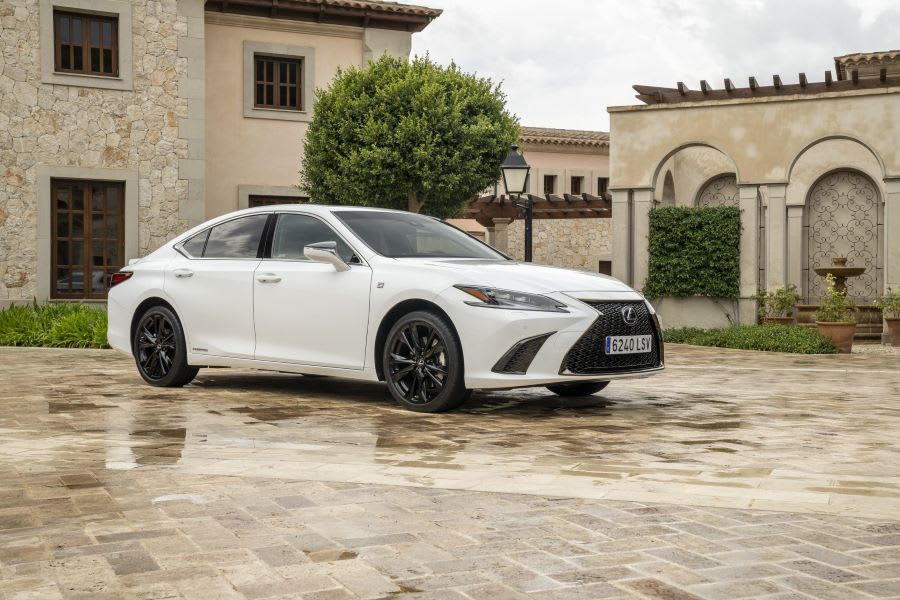
The rear also looks somewhat conventional, with a hint of Japanese garnish. The headlights taper inwards towards the car's centre, and a chrome strip runs the entire width of the boot. While the rear is less busy than the front, it still has character, helped by a diagonally angled exhaust pipe on either side at the bottom.
This Lexus is slightly longer and lower to the floor than its rivals and, as a result, it looks more athletic.
We suspect its looks will divide opinion, and we're sure some will hate the ostentatiousness of the front end. But, considering the mundane designs that Japanese cars used to be guilty of, it’s undeniable that it’s the Germans who are now looking on the conservative side compared with this.
And that's what Lexus is going for. It needs to give people a reason to have the ES over a Mercedes-Benz E-Class, an Audi A6 or a BMW 5-Series. The automaker is after motorists who want to stand out from the euro boxes – and you’ll be able to in an ES.
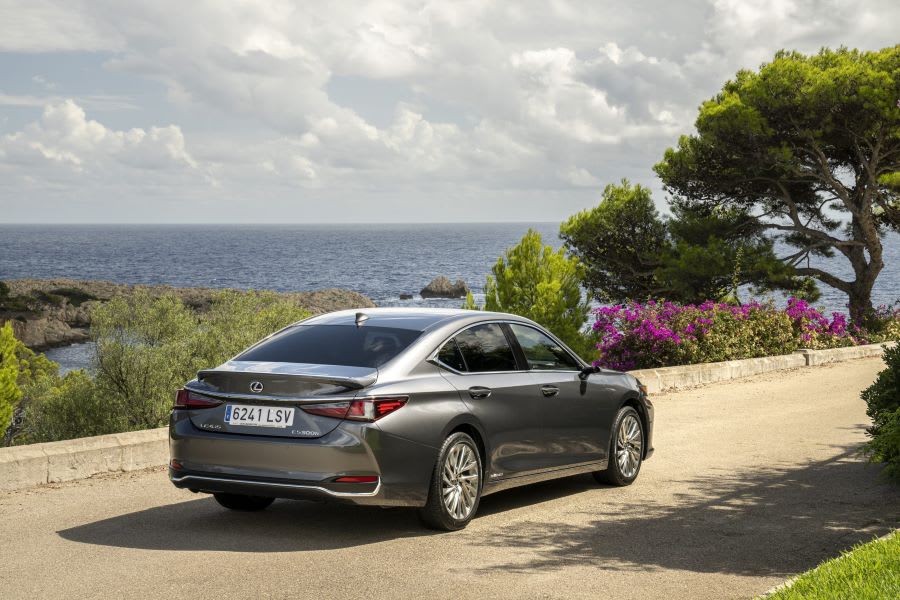
Key Features
There is only one variant of the Lexus ES available, the 300h.
As the ‘h’ suggests, it’s a hybrid– and a self-charging one at that. But, unfortunately, there is no plug-in hybrid, as offered by its European challengers, and there’s no bog-standard petrol or diesel variant, either.
The saloon is propelled by a naturally aspirated 2.5-litre four-cylinder petrol engine. When combined with an electric motor, it produces 218PS, around 40 horses of which are provided by the latter. Oh, it's a front-wheel-drive model, too.
This Lexus isn’t designed to be driven for a prolonged period on all-electric power. However, the car ensures that its reliance on the electric motor and battery capacity is optimally managed, delivering the most economical performance possible. Outright grunt is not what the ES is about – despite the aggressive looks. The saloon is very much intended to be a comfortable cruiser, as demonstrated by its figures: it takes 8.9-seconds to get from 0-62mph and tops out at 112mph.
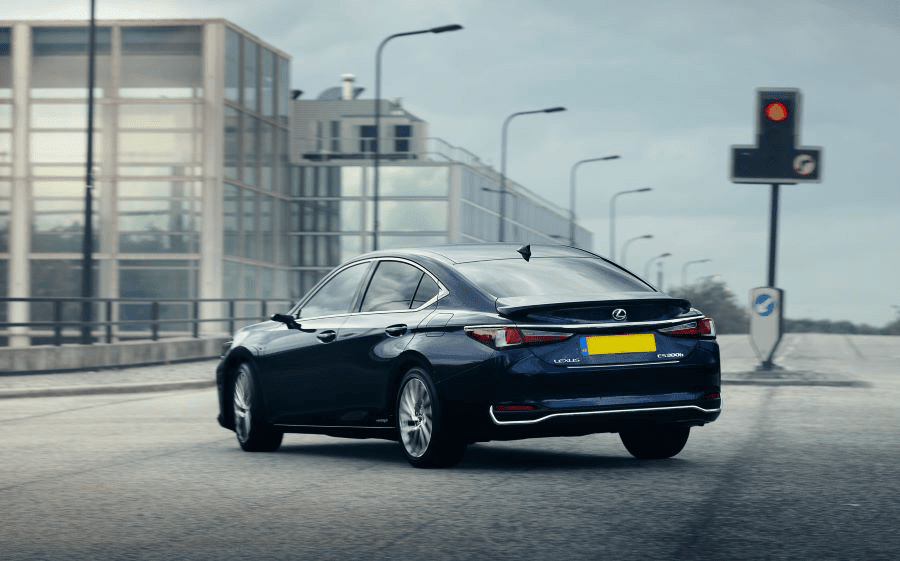
It also has a CVT gearbox, which means there's only one gear. So although you still have the same performance you get with a conventional six, seven or eight-speed transmission, it actually sounds like you only have one gear. Mind you, Lexus uses simulated ‘steps’ in the transmission, so it seems more familiar to those used to conventional cog changes.
There are four trims available, known as ‘grades’.
Entry-level ES grade gets you 17-inch alloys, the Lexus Safety System Plus (including emergency braking and radar-guided cruise control), electrically adjustable front seats, and an eight-inch touchscreen infotainment system. This incorporates Apple CarPlay/Android Auto, while a reversing camera and a sunroof are part of the package, too.
Next up is the Premium Edition. This version upgrades the rims to 18-inches and gets you a more prominent 12.3-inch touchscreen display with premium navigation, a wireless smartphone charger, and a leather steering wheel. Stainless steel scuff plates, privacy glass and rain-sensing wipers are also included.
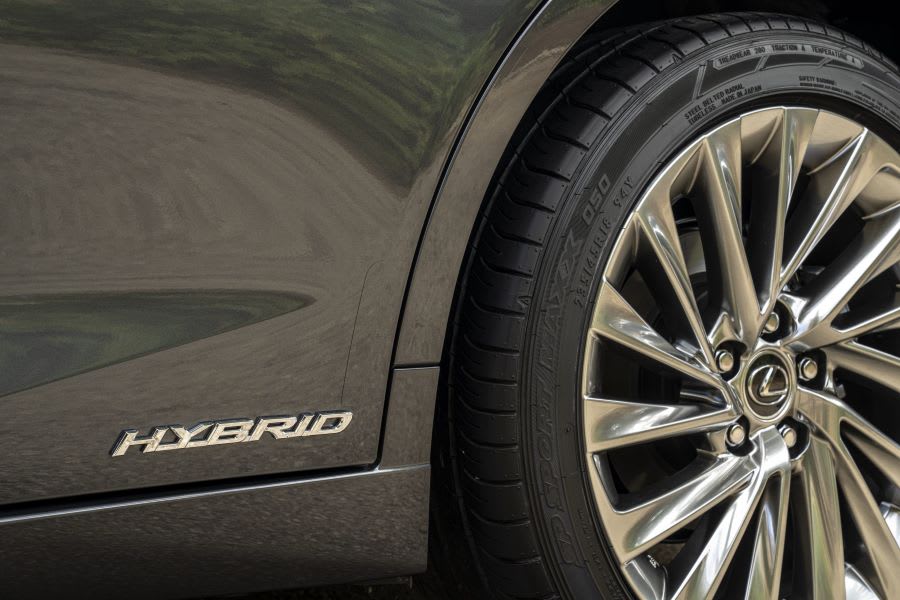
F Sport gets even bigger alloys at 19-inches and adds exterior styling. This additional tailoring includes enhancements to the front grille, a metallic coated front bumper, F Sport badging and black mirror covers. The car also houses Drive Mode Select with five driving modes, including Eco, Normal, Custom, Sport S and Sport Plus and adaptive variable suspension.
Finally, top-of-the-range Takumi grade gets you semi-aniline leather upholstery and a 17-speaker Mark Levinson premium surround sound system. You also get a 360-degree panoramic view monitor, a head-up display and ‘3-Eye’ LED headlights with adaptive high beam. A powered boot with a kick sensor and 18-inch alloys are also part of this trim level.
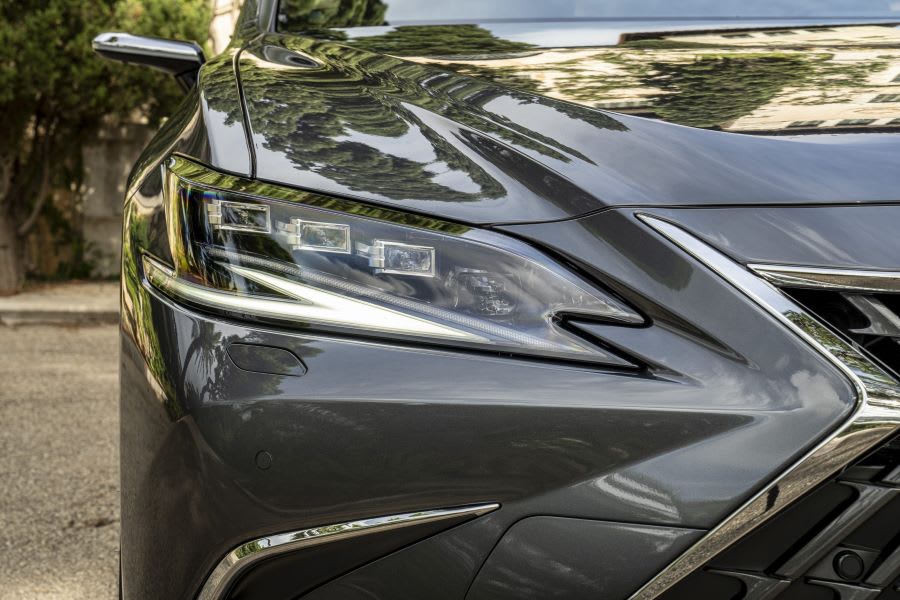
Performance & Drive
We are test driving the F Sport grade. And, under acceleration, the Lexus doesn’t deliver the same performance as its rivals. It feels a bit restrained and doesn't feel fast at all. The CVT gearbox also struggles under the strain of a brutal pedal-to-the-metal thrash and feels smoother when you’re just as smooth with your pedal inputs.
Those who want to roar off from the traffic lights like Lewis Hamilton will be better siding with his team and getting a Mercedes-Benz instead. Why? Well, flooring the throttle results in a lot of noise and not much in the way of a shove towards the speed limit.
But, in getting the inferior performance out of the way first, we’ve covered just about the only area where the Lexus can’t compete. Indeed, Lexus doesn’t even intend to compete – despite the F Sport trim. The automaker has no interest in offering a sports car, so this is very much a vehicle designed to deliver you to your destination in a refined, sophisticated, and relaxed manner.
Indeed, the ride comfort is sublime, and the ES excels in delivering relaxing luxuriousness. It is very well sound-proofed, so wind and road noise are well hidden. Even in F Sport grade with the largest alloys, it’s adept at smoothing out rougher road surfaces, ironing out creases and absorbing lumps in the tarmac. This is undoubtedly helped by the adaptive variable suspension, which is exclusive to the F Sport. That said, all grades offer an excellent level of comfort, thanks to their smaller wheels. As a result, longer journeys feel effortless, and you won’t end a 100-mile trip feeling like you’ve rinsed yourself with a workout.
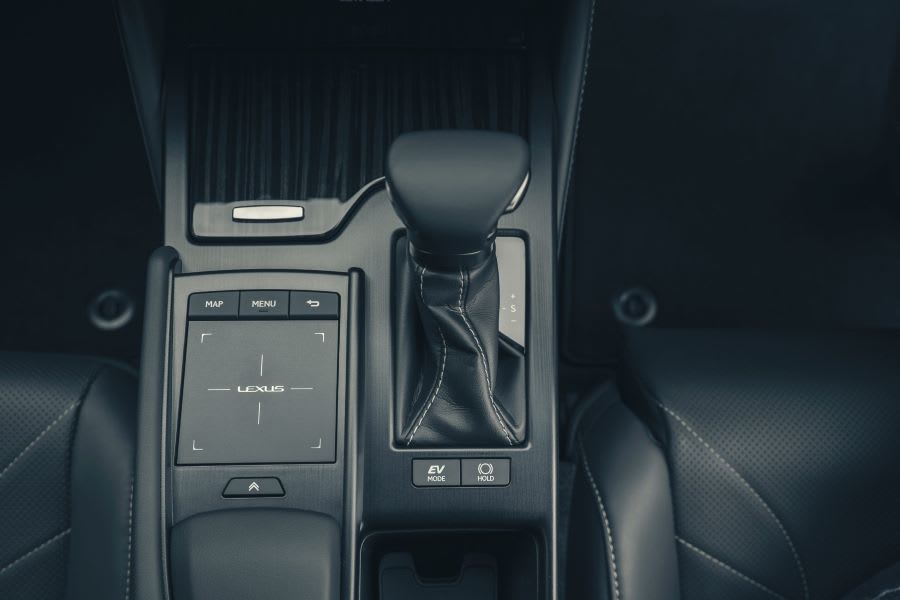
Though the ES will run on all-electric power, it won’t do this for long. The engine will kick in whenever any amount of performance is requested by your right foot on the accelerator. Mind you, it will prolong petrol-free driving in towns and urban areas. Of course, the powerplant will turn off when coasting sometimes, but the electric motor is best seen as an add-on that will help fuel economy, emissions and your wallet in fuel and tax savings. It shouldn’t be perceived as something that can be relied upon for engineless driving in the same way most plug-in hybrids can.
However, a choice of five driving modes in the F Sport seems pointless. It isn't a performance model, so having two sports modes seems excessive. Plus, there isn’t enough grunt or versatility in the acceleration due to the CVT gearbox to offer a significant difference between each driving setting.
The steering feels light, and this near weightlessness makes manoeuvring the car around town effortless, despite its relatively large size.
In terms of handling, the saloon is excellent when you factor in who Lexus is aiming this car at. Don’t expect to be able to throw it around a bend, though – it’s too big and not set up for it – but the body lean in the corners is well controlled. Those who want sporty driving characteristics will be disappointed, though. The car is built for comfort, and, as a result, the ES is on the tame side on twisty roads, but that’s very much by design.
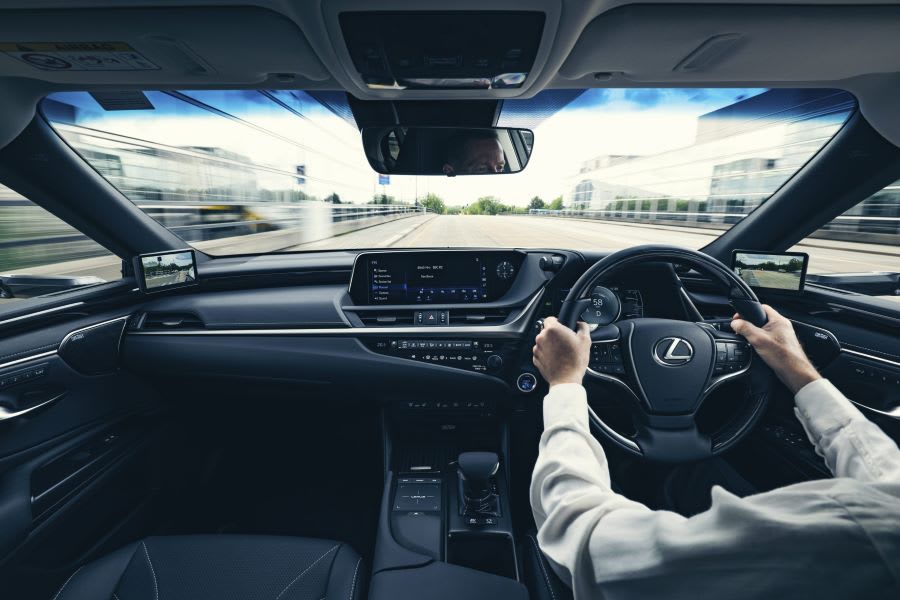
Running Costs & Emissions
You will get around 48.7mpg out of the Lexus ES, which provides you with the fuel economy of a diesel while enjoying the refinement of a petrol.
Emissions are 119g/km of CO2, which will appeal to company car users.
And, just for your information, Lexus provides a three-year, 60,000-mile warranty for this model.
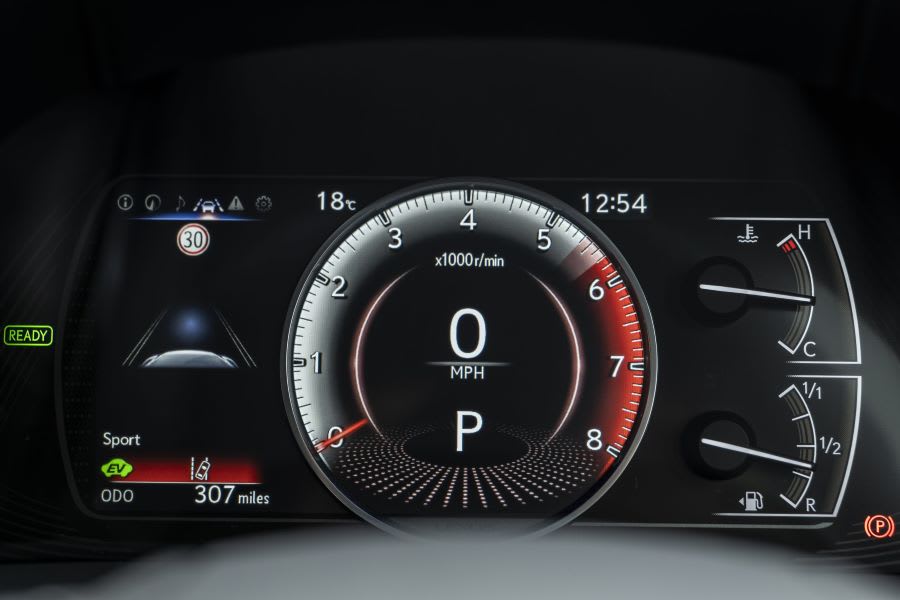
Interior & Technology
The inside of the ES is lovely and, while Mercedes-Benz, Audi and BMW will marginally beat it, it barely feels inferior to its opponents.
It is an excellent place to be. The seats are comfortable, and there are lots of plush materials, soft-to-the-touch surfaces and hand-stitched leather and leatherette. There are a few plastics, though, notably around the centre console, while the door bins feel a bit cheap.
Overall, though, the build quality inside is good, and every button and dial feels like it's been well-designed without cost-cutting. The steering wheel is satisfying to grip, and most interior parts feel sturdy.
The new, more extensive 12.3-inch infotainment system is better than Lexus’ previous attempts, which were, frankly, awful and controlled by a touchpad and a pointer. After all, operating something akin to a laptop while you’re driving isn’t a good idea.
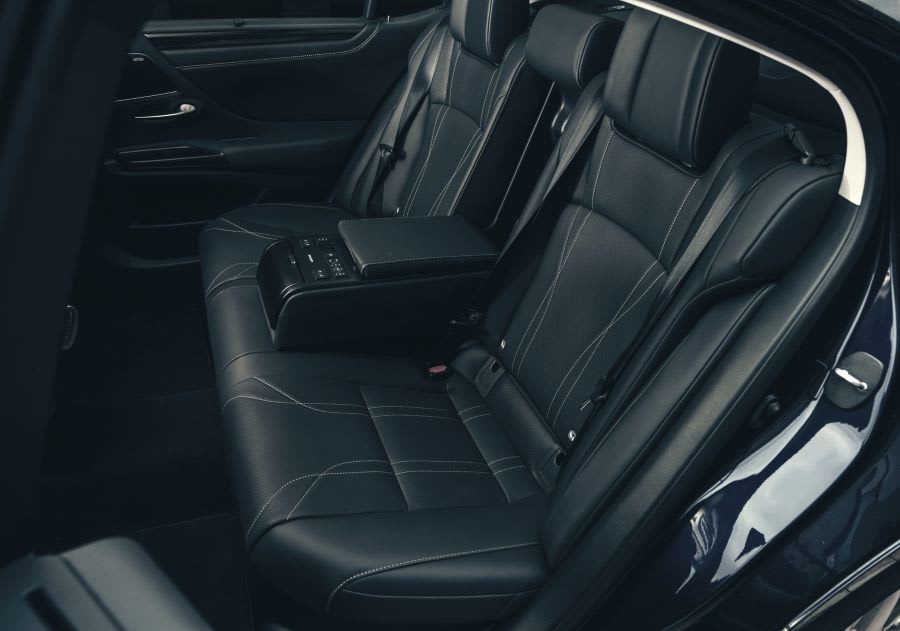
Thankfully, all that is gone. There is no rotary dial, so everything is controlled by the touchscreen, but that’s only a minor gripe as it’s vastly improved over what came before. The screen is now further forward, and it’s angled towards the driver, too, so it’s easier to reach. It still isn’t a match for BMW’s iDrive system, but it’s a huge step forward with crisp, clear graphics. In addition, it is much more user-friendly –, and you get Apple CarPlay/Android Auto incorporated as standard.
You also get a digital instrument display, which is as clear as the infotainment screen, while there’s a head-up display in the flagship Takumi trim. Digital door mirrors are also an option on the Takumi grade, replacing conventional mirrors with cameras. These cameras relay the image onto two digital screens on each corner of the windscreen. However, we're surprised the picture isn't a higher resolution, given it’s replacing a real-life view through a mirror. The Mark Levinson stereo system is also impressive if you care about sound quality.
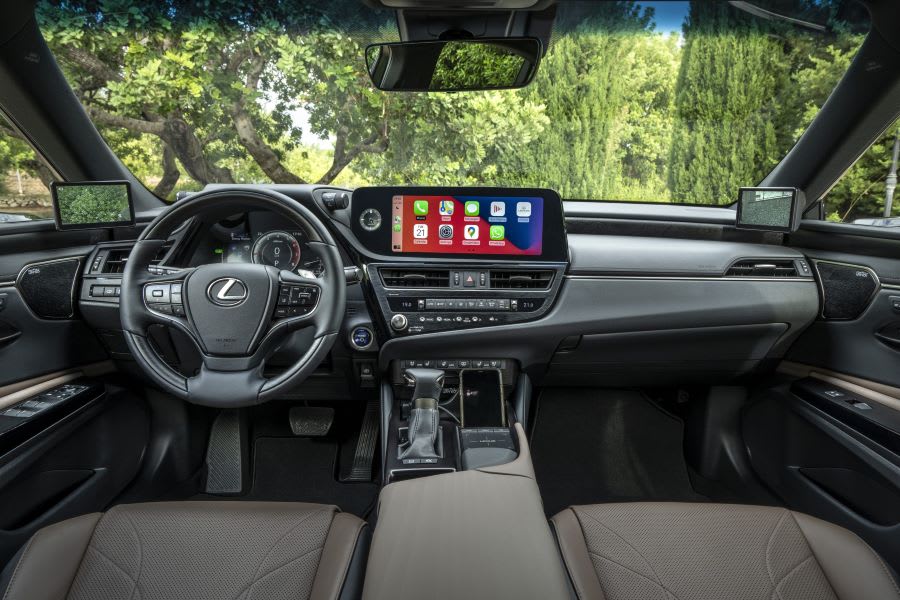
Practicality & Boot Space
There is a good volume of space inside – the driving position is decent, and you don't feel hemmed in while sitting in the driver's seat.
The ES is roomy in the back, too. You will easily fit two adults in there comfortably while transporting three occupants should be acceptable for all but the longest of journeys.
Despite the fact it’s a four-door saloon, the ES is unmistakably coupe-styled. Therefore, the roofline slopes downwards towards the rear, impacting taller rear-seat passengers' headroom. The leg and knee room is plentiful, though, helped by thin front seats. Towards the bottom, the chairs angle more aggressively away from rear-seat passengers’ legs than in some cars, which helps get your feet underneath them. So, if you’re well over six feet tall, you should be able to position yourself such that the headroom isn’t an issue.
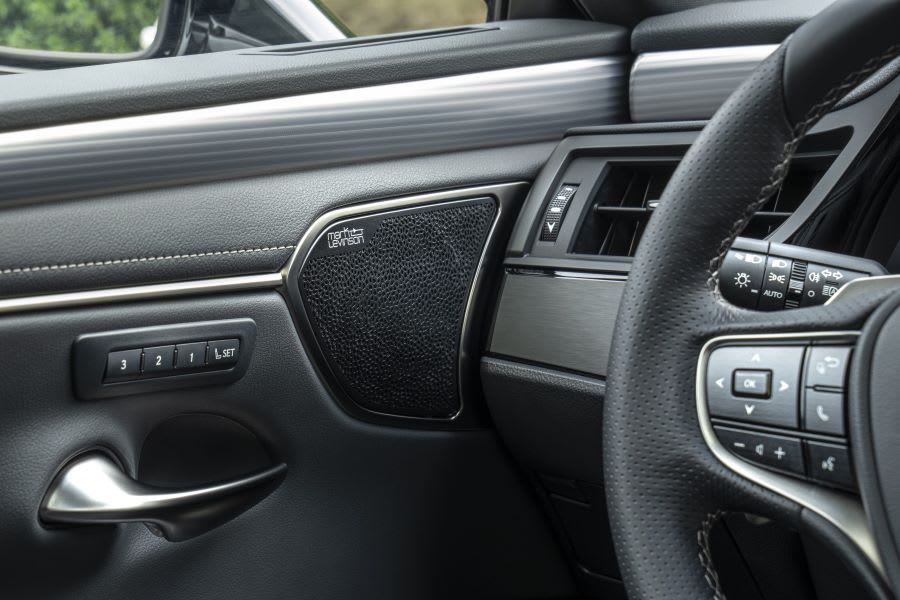
The door bins are well-sized, while there are a couple of cupholders in the centre console along with some decent storage space. The glovebox feels a bit cheap and isn’t that big, though.
Boot space is 454-litres, although the equivalent BMW, Mercedes-Benz and Audi all offer 520-litres or more. Plus, there’s quite a large boot lip, which makes things tricky if you’ve got heavy or unwieldy items to fit in.
What is frustrating, though, is that the rear seats in the ES cannot be folded. Therefore, if you need to get something bulky in, you’re in for a shock. There is a ski flap in the middle seats to thread longer objects through, but that’s it. The rear seats in the Takumi trim can be reclined, however.
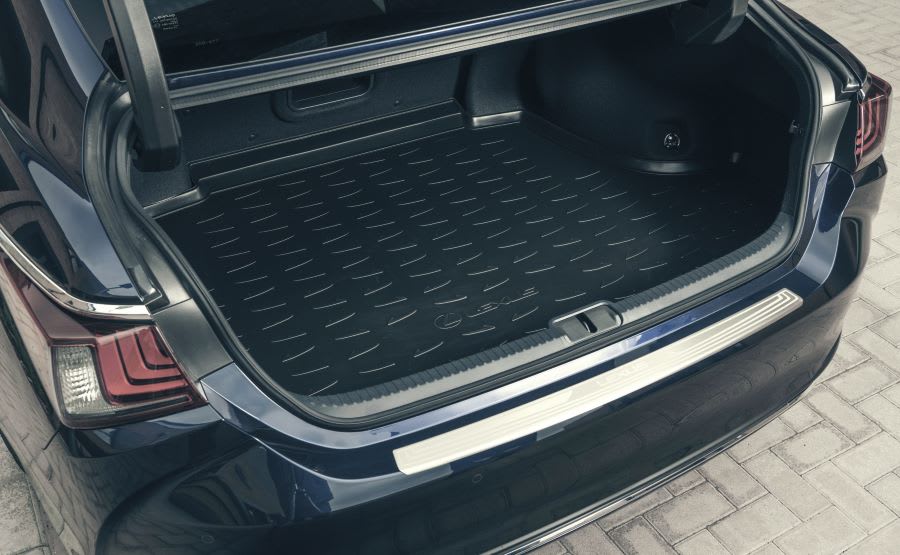
Safety
The previous Lexus ES was crash-tested by Euro NCAP in 2018 and earned a full five-star safety rating.
The vehicle scored impressively, too – 91 per cent for adult occupants, 87 per cent for children, 90 per cent for pedestrians and 77 per cent for safety assists.
Given that the up-to-the-minute ES is barely any different, this tally will still represent the new one. That said, Euro NCAP has changed its criteria since then, so it wouldn’t achieve quite as highly if re-tested today.
You get radar-guided cruise control, blind-spot monitoring, automatic emergency braking, plus rear cross-traffic alert and braking, as standard on all ES grades.
Rear pedestrian detection and BladeScan adaptive high beam are available as optional extras.
Options
You can obtain various add-ons for the ES 300h, although their availability depends on your selected grade.
The entry-level ES grade allows a Premium Pack to be added. This pack comes with a choice of upholstery colours, scuff plates, electronic lumbar support, a heated steering wheel and ventilated front seats, amongst other features.
You can also add the larger touchscreen and premium navigation to the F Sport mode, as well as a Tech and Safety Pack and the Takumi Pack.
Oh, and the Takumi grade can have the digital door mirrors for a four-figure sum.
All trims have additional subtle styling features that can be added to the car's exterior, too.
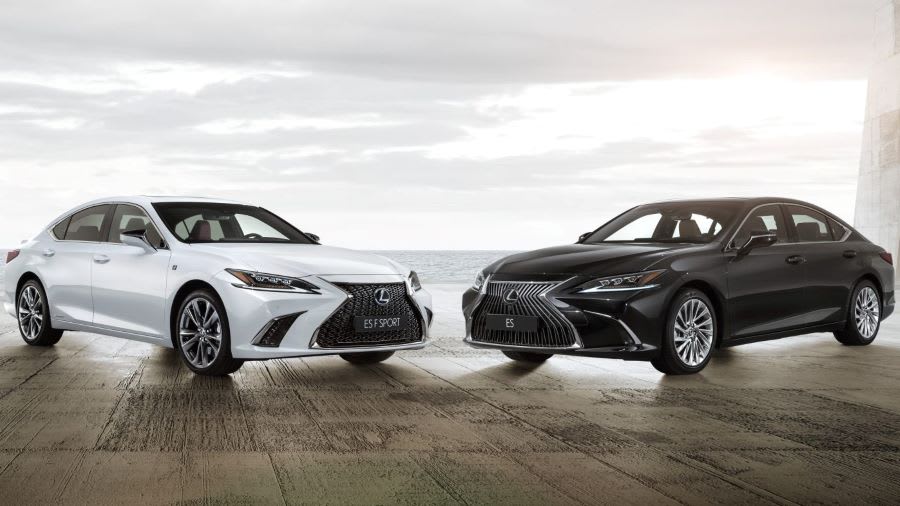
Rival Cars
Lexus is positioning the ES against premium brands. So naturally, this car is squarely aimed at taking a chunk out of the market shares of BMW’s 5 Series, Audi’s A6 and Mercedes’ E-Class.
In truth, the ES isn’t enough to knock the Germans off their perch. But, if a car’s looks are important to you, the ES is undeniably the most head-turning of the lot.
Of course, if the Germans are off the table for you anyway, a Jaguar XF is also worth thinking about.
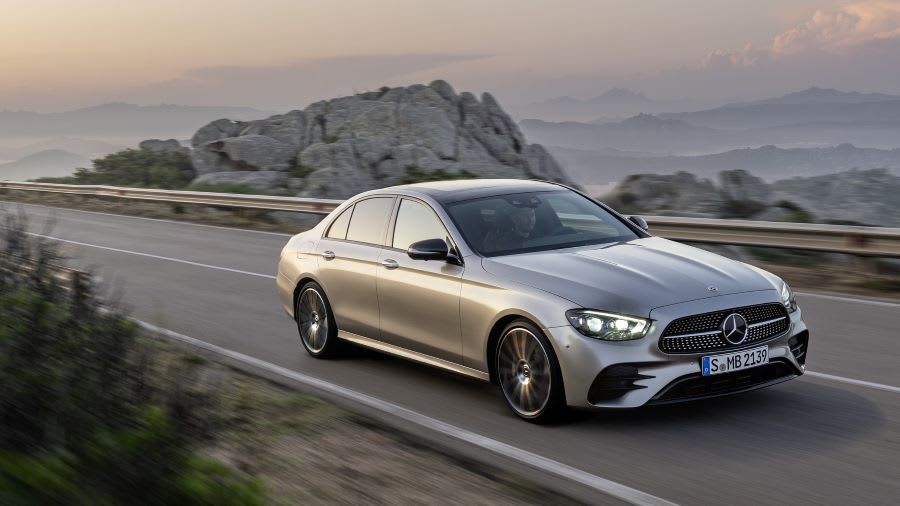
Verdict & Next Steps
Overall, the Lexus ES is a credible alternative to the big guns of Germany.
It isn't as luxurious or fun to drive, but it's more relaxing than its direct competitors. And, in terms of looks, it’s undeniably striking and funky compared with its rivals.
It feels refined to drive unless you floor the throttle, and it has a much-improved infotainment system. The interior is practical, roomy, and well designed, and the safety kit is impressive.
On the downside, if you’re not interested in hybrids, then you’re out of luck. And, if you especially like hybrids, there’s no plug-in variant, while the lack of engine choice might also be a turn-off.
Cargo space will be an issue for anyone who relies on it – and the rear seats’ inability to fold down will be a drawback if you need more boot space. Plus, the ES’ boot room with the rear seats in place trails its rivals.
Nevertheless, this is a good step forward from Lexus. If you don’t mind the hybrid tech or the lack of luggage capacity and you need a comfortable executive saloon that’s not run-of-the-mill, then the ES 300h should be high up on your leasing list.
Where to next?
View latest Lexus ES 300h Leasing Deals- from just £553.45 per month inc VAT**
Looking for a great leasing deal? Check out our incredible range of Special Offers
New Coupe? Read our latest Car Reviews and find the right model for you
Want to know more about leasing? Take a look at our comprehensive Leasing Guides
Interested in everything motoring? Why not catch up on all the latest Car Leasing News.
**Score based on Select’s unique meta score analysis, taking into account the UK’s top five leading independent car website reviews of the Lexus ES 300h
**Correct as of 25/02/2022. Based on 9 months initial payment, 5,000 miles over a 48 month lease. Initial payment equivalent to 9 monthly payments or £4,981.05 Ts and Cs apply. Credit is subject to status.





















